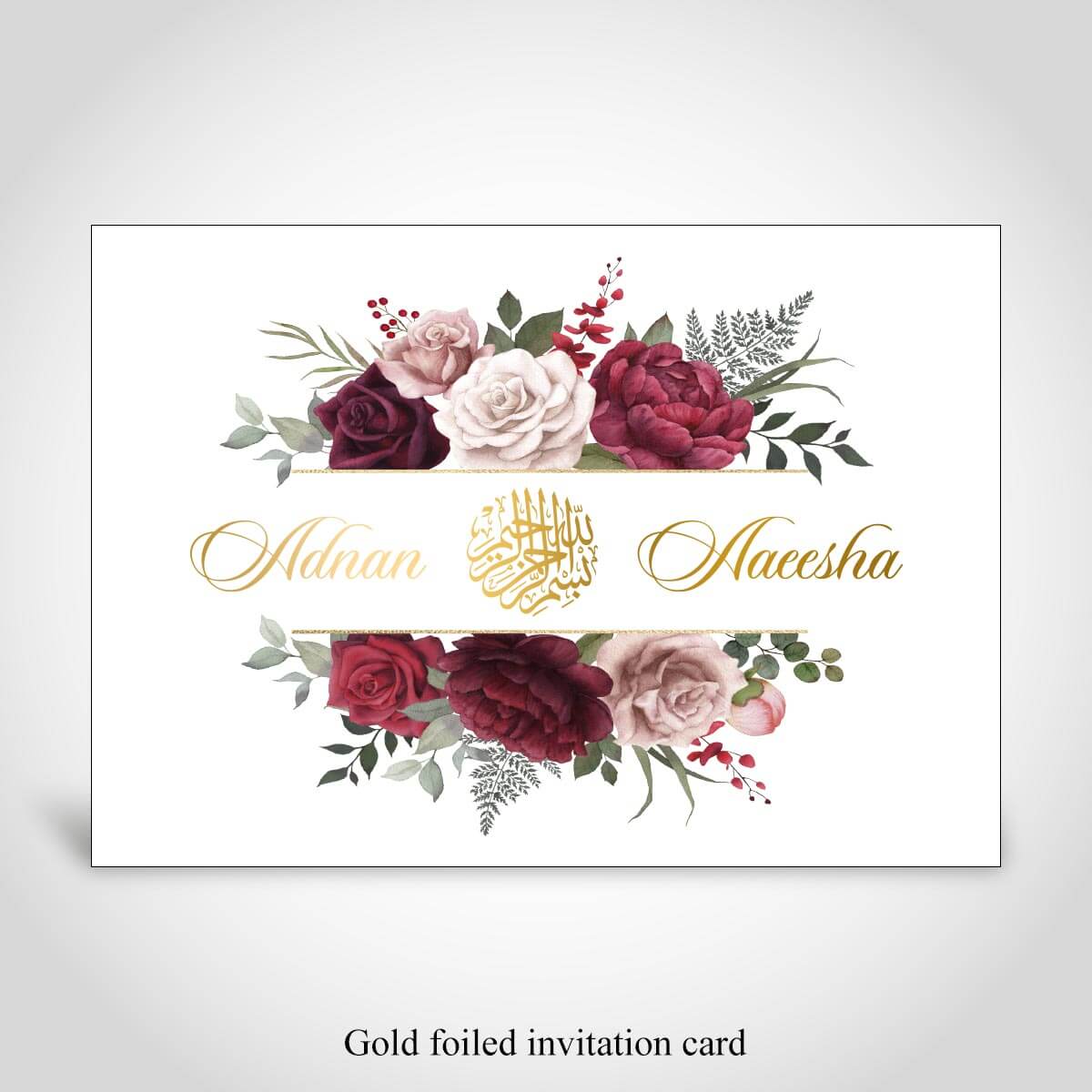
Stunning Muslim Wedding Invitations: A Blend Of Tradition And Art
Muslim wedding invitations are more than just a piece of paper, they are a reflection of the couple’s culture, traditions, and values. These invitations are an integral part of Muslim weddings, conveying the significance of the event to the invitees.
They are a beautiful blend of tradition and art, incorporating cultural and religious symbols to create stunning designs that captivate the eye and touch the heart. From the use of calligraphy, to verses from the Holy Quran, and personalized symbols or initials, Muslim wedding cards are unique and deeply meaningful.
Each invitation is crafted with care and attention to detail, and often takes inspiration from the couple’s personal style and preferences. These invitations not only convey the wedding details but also serve as a reminder of the couple’s love and commitment, making them an essential part of every Muslim marriage.
In this article, we will explore the beauty and significance of Islamic wedding invitation, and how they have become a signature style of Muslim matrimony around the world.
Design and Style
The design and style of Islamic wedding cards incorporate traditional Islamic symbols and Moghul art, with green and red being common colors that hold religious and symbolic significance. Green is considered a sacred color in Islam and symbolizes life, renewal, and growth, while red symbolizes fertility and prosperity.
Muslim wedding cards often feature intricate designs of leaves, domes, peacock feathers, and other intricate patterns that are a blend of age-old traditions and modern trends. Along with traditional designs, there has been a surge in modern and artistic designs with intricate details that are easily accessible. Muslim wedding invites today may include materials like satin, velvet, metallic paper, and shiny tissue paper. Ethnic color combinations and floral prints are also popular choices.
The cards follow a simple, but aesthetic format of invitation and are known for their graceful look with classic designs and styles.
Elements and Symbols
Symbols and elements commonly found in Muslim wedding invitation cards include calligraphy, traditional Islamic motifs, and verses from the Holy Quran. The Bismillah image is often placed in the center of the invitation and is a common symbol of Muslim weddings.
Other symbols may include designs of leaves, domes, hearts, peacock feathers, and other intricate patterns, all of which hold cultural and religious significance in Islamic symbolism.
For Muslim couples, incorporating cultural and religious elements into their wedding invitations is an important aspect of their special day. They may choose to include verses from the Holy Quran that hold personal significance for them, or traditional Islamic motifs that reflect their cultural heritage.
These elements not only add beauty and elegance to the invitation, but also serve as a reminder of the couple’s shared cultural and religious values. Overall, Muslim wedding invites are a unique blend of tradition and art, reflecting the rich cultural heritage of Muslim matrimony.
Purpose and Significance
One important aspect of Islamic wedding invites is their purpose in inviting guests and providing details about the wedding, while also conveying the sentiments of the families involved. Muslim wedding cards are not just a formality, but they carry a deeper cultural significance for both the families and the couple.
The wedding invitations are a reflection of the couple’s personal style and perception of the event, as well as a way to honor the traditions and customs of their religion. The importance of Muslim wedding invitations lies in their ability to convey the special sentiments of the families involved.
The cards serve as a symbol of the couple’s union and the blending of their families and cultures. Moreover, Muslim wedding cards are an important ingredient of every marriage as they not only invite guests but also set the tone for the event.
The cards are crafted with intricate designs and patterns, reflecting the artistic talents of the craftsmen and the religious significance of the occasion. Overall, Muslim wedding invitation cards hold immense cultural significance and are a testament to the beauty and richness of Islamic art and tradition.
Frequently Asked Questions
What is the typical timeline for sending out Muslim wedding invitations?
The sending timeline for Muslim wedding invitations varies according to cultural variations. Generally, invitations are sent out at least two to three months prior to the wedding. However, it is advisable to check with family and cultural traditions for specific guidelines.
Are there any specific etiquette rules to follow when designing and wording Muslim wedding invitations?
Muslim wedding invites etiquette includes incorporating religious and cultural symbols, using calligraphy, and adding verses from the Holy Quran to bestow blessings on the couple. Common design elements include customized Bismillah images, intricate patterns, and traditional colors such as green and red.
How do Muslim couples typically choose the design and style of their wedding invitations?
Muslim couples typically choose their wedding invitation design and style by finding design inspiration from various sources, including cultural influences such as traditional Islamic symbols and Moghul art. The design often incorporates calligraphy and verses from the Holy Quran to bestow blessings on the couple.
What are some unique features or customization options that are commonly offered for Islamic wedding invitations?
Islamic wedding invitation designs often incorporate traditional Islamic symbols, calligraphy, and verses from the Holy Quran. Popular customization options include personalized symbols or initials, Kundan Meena work, and a variety of materials such as satin and metallic paper.
Are there any regional or cultural variations in the design and symbolism used in Muslim wedding invitations?
Geographical variations in Muslim wedding invitations exist. Symbolic representation varies by culture and region, with some incorporating traditional Islamic symbols and others incorporating local cultural symbols. Calligraphy remains an important part of Muslim culture.

